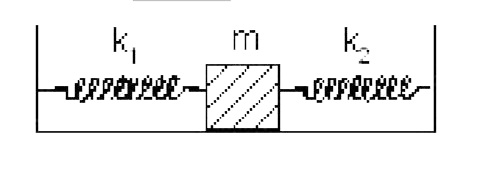If an electron oscillates at a frequency of 1 GHz it gives
X-rays
Mirowaves
Infrared rays
None of these
The correct Answer is:D
Step by step video, text & image solution for If an electron oscillates at a frequency of 1 GHz it gives by Physics experts to help you in doubts & scoring excellent marks in Class 12 exams.
Updated on:21/07/2023Topper's Solved these Questions
- ELECTRON, PHOTON, PHOTOELECTRIC EFFECT AND X-RAYSBook:ERRORLESS Chapter:ELECTRON, PHOTON, PHOTOELECTRIC EFFECT AND X-RAYSExercise:Cathode Rays and Positive Rays
Explore 11 Videos
- ELECTRON, PHOTON, PHOTOELECTRIC EFFECT AND X-RAYSBook:ERRORLESS Chapter:ELECTRON, PHOTON, PHOTOELECTRIC EFFECT AND X-RAYSExercise:Photon and Photoelectric Effect
Explore 4 Videos
- ELECTRO MAGNETIC INDUCTIONBook:ERRORLESS Chapter:ELECTRO MAGNETIC INDUCTIONExercise:SET
Explore 20 Videos
- ELECTRONICSBook:ERRORLESS Chapter:ELECTRONICSExercise:Selv Evaluation Test
Explore 23 Videos
Similar Questions
A block of mass m is connected between two springs (constants K1 and K2) as shown in the figure and is made to oscillate, the frequency of oscillation of the system shall be-

View SolutionA mass m suspended by a spring, oscillates with frequency f1. The same mass m oscillates with frequency f2 if length of the spring is made one-third. Find the ratio f1/f2.
View Solution
Knowledge Check
An electron oscillating with a frequency of 3×106 Hz, would generate -
A1. X raysB2. Ultraviolet raysC3. Radio wavesD4. MicrowavesA bar magnet oscillates with a frequency of 10 oscillations per minute . When another bar magnet is placed on its axis at a small distance , it oscillates at 14 oscillations per minute . Now , the second bar magnet is turned so that poles are instantaneous , keeping the location same . The new frequency of oscillation will be
A2 vibrations/minB4 vibrations/minC10 vibrations/minD14 vibrations/minA damped harmonic oscillator has a frequency of 5 oscillations per second. The amplitude drops to half its value for every 10 oscillations. The time it will take to drop to 11000 of the original amplitude is close to:
A100sB10sC50sD20s
The ratio of induced emf in a coil of 50 turns and area A oscillating at frequency 50Hz to that in a coil of 100 turns and same area oscillating at frequency 100Hz is:
View SolutionIn an oscillator, frequency of oscillations is given by
View SolutionA telephone link operating at a center frequency of 10GHz is etablished. If 1% of this is a available then how many telephone channel can be simultaneously given when each telephone covering a band width of 5kHz?
View SolutionIf a body oscillates at the angular frequency (ωd) of the driving force, then the oscillations are called
View SolutionFor a particle performing a linear SHM the ratio of the frequency of oscillation and the frequency of kinetic energy is
View Solution

